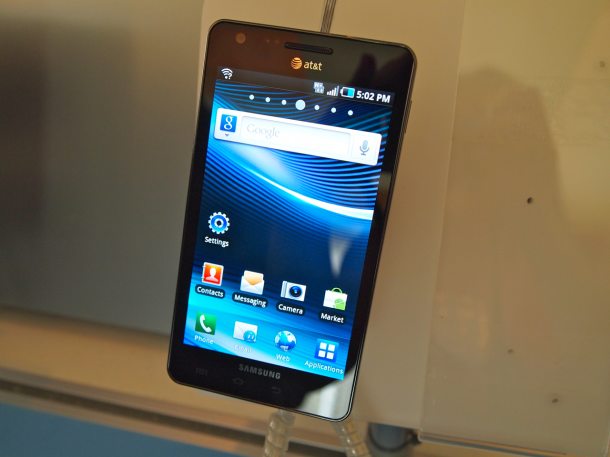Samsung Infuse 4G: Are smartphones becoming tablets?


AT&T and Samsung unveiled the Infuse 4G on Thursday in New York City. One of the most noteworthy and noticeable specs was the 4.5-inch display, which raises the question: is the line between smartphones and tablets becoming blurred?
While the 4.5-inch diagonal Super AMOLED Plus touch screen isn't that far off from other large smarpthones like the 4.3-inch displays on the HTC Evo 4G and Motorola Droid X, it is certainly getting closer to some of the smaller-scale tablets such as the original 5-inch Dell Streak.
[Image Gallery: Hands-on with AT&T's Samsung Infuse 4G]
When holding the Infuse 4G initially, it definitely felt like a bulkier smartphone. Sure, it's only 8.99mm thin, making it slim enough to fit into a pocket, but it could definitely stick out of a pocket. It's not large enough in any regards to be considered a tablet, but a display this large for a smartphone is pushing the boundaries - perhaps unnecessarily.
Smartphone manufacturers and wireless providers have tried to advertise larger smartphones such as the HTC Droid Incredible as perfect for watching movies while traveling, and the Infuse 4G would definitely be the optimal choice if that's why a consumer is buying a smartphone. But video playback usually isn't the sole reason a consumer would buy a smartphone.
A 4.5-inch display just isn't necessary for a smartphone - let alone one running only Android 2.2. The large display and the thin frame are the only qualities that make the Infuse 4G stand out from the plethora of other 4G-enabled, Android smartphones rolling out in 2011. Perhaps if it was running Gingerbread or offered some other unique productivity features, then the Infuse 4G would be more significant.
At this point, it seems that mobile phone manufacturers want to push how large a smartphone display can be. While it's great that developers and designers want to push the boundaries, eventually we're going to hit the limit. Smartphones already have their own place with smaller screens, and consumers will buy tablets if they want and/or need a device with a panel that measures seven inches or larger. There is no need to enlarge smartphones to the point where they might feel like mini-tablets.
Related coverage on ZDNet: